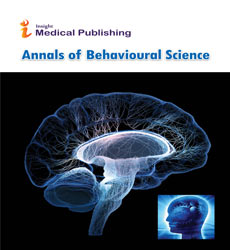Note on Differentiating Personality and Psychopathology
Sui Lea
Sui Lea*
Department of Psychotherapy, Tohoku University, Sendai, China
- *Corresponding Author:
- Sui Lea
Department of Psychotherapy
Tohoku University
Sendai, China
E-mail: suilea@kt.cn
Received Date: September 03, 2021; Accepted Date: September 17, 2021; Published Date: September 24, 2021
Citation: Lea S (2021) Note on Differentiating Personality and Psychopathology. Ann Behav Sci Vol.7 No.3:005.
Description
Several lines of study converge to show that character and psychopathology can be incorporated in the form of a hierarchical version of the differences between men and women. The perception that character and psychopathology are intrinsically related has an expanded way of life in psychodynamic techniques. In this article, we first summarize the empirical evidence supporting the associated key assumptions of psychodynamic techniques related to character and psychology: that a person-centered developmental technique is intended to complement a static technique targeting disorder within conceptualization. The treatment of psychopathology; and that character and psychopathology are successfully conceptualized as dynamic attempts at adaptation.
The creators of the DSM hoped that a descriptive categorization technique might further study the underlying ideas of psychiatric categorization, allowing for the improvement of an additional fully empirically-based and categorical device in the future. Thus, the main assumption becomes that psychiatric problems are largely in the foreground, primarily on the basis of objectively assessable symptom criteria. It quickly became apparent that this technique would be more difficult than expected. It quickly turned out that etiological concerns in the classification of some psychiatric problems (for example, it also quickly became clear that personal skills had to be protected from psychiatric problems as "descriptive abilities", not only for personal problems, but also for many " symptoms Regardless of acute problems with a taxonomic technique, for decades various approaches to psychiatric category have receded into the background, at least in conventional psychiatry and psychology, as their primary assumptions about category and prognosis are more Intellectuals are distinguished from those by the predominant technique of description. This is indeed the case for psychodynamic procedures of the psychiatric category. These procedures are essentially developmental and person-centered; they pay attention to developmental pathways from infancy to childhood.
The creators of the DSM hoped that a descriptive categorization technique could encourage studies of the underlying ideas of psychiatric categorization, allowing for the improvement of an additional fully empirically-based and categorical device in the future. Thus, the main assumption becomes that psychiatric problems are largely in the foreground, primarily on the basis of objectively assessable symptom criteria. It quickly became clear that this technique would be more difficult than expected. It quickly turned out that etiological concerns in the classification of some psychiatric problems (for example, it also quickly became clear that personal skills had to be protected from psychiatric problems as 'descriptive skills', now not only for personal problems, but also for many "Regardless of acute problems with a taxonomic technique, various procedures related to psychiatric category fell into the background for decades, at least in conventional psychiatry and psychology, as their main assumptions about the category and prognosis of the Intellectual problems have been neglected. The predominant description technique had differed significantly from those. This is actually the case for psychodynamic procedures in the psychiatric category. These procedures are essentially developmental and person-centered; they pay attention to the developmental pathways from infancy to maturity and how disorders of developmental responsibility express themselves in the course of life due to complex interactions between organic and psychosocial elements.
Conclusion
Although most studies on this environment support these assumptions, we have mentioned that appropriate taxa may also exist, and therefore in some cases it might be practical to distinguish male or female from disease. In fact, the difference between male or female and disease can be so mitigated by severity that increasing degrees of severity appear to result in increased intrinsic coupling between the two. At low ranges of a psychopathological trending factor, mental health problems may not occur better in relative isolation, but are exceptionally impressive due to premorbid personality traits.
Open Access Journals
- Aquaculture & Veterinary Science
- Chemistry & Chemical Sciences
- Clinical Sciences
- Engineering
- General Science
- Genetics & Molecular Biology
- Health Care & Nursing
- Immunology & Microbiology
- Materials Science
- Mathematics & Physics
- Medical Sciences
- Neurology & Psychiatry
- Oncology & Cancer Science
- Pharmaceutical Sciences
